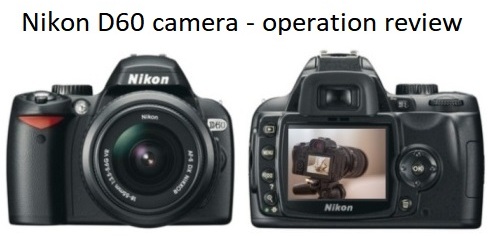Nikon D60 camera - operation review
With the Nikon D60, you will see the world through different eyes. It was given to me. I was delighted just like an ordinary camera, not imagining what difference there could be between an ordinary soap dish and a Nikon D60.
When I took the first pictures, I was just shocked. As a child, I was always interested in photography, but I could not even imagine what opportunities could open up with this SLR camera. My homemade violet opened up to me in a new perspective, with the capabilities of a 10 megapixel camera lens. If you want macro photography, please, or maybe you need to capture a person in motion or do a portrait photo shoot. I can't imagine life without my Nikon D60 right now, I just fell in love with it.
I chose the camera for a very long time, about half a year. After all, after all, the purchase is not cheap. As a result, it so happened that my friend went to the USA and I asked her to bring me a camera. The purchase turned out to be a little cheaper than it cost in our hometown. This device allows you to get high-quality photos, opens up an extraordinary scope for creativity, gives you the opportunity not just to stupidly press a button, but to think and at the same time create. In addition, fans of just "clicking" will also not be offended, since the quality of photos in automatic mode does not suffer at all. In general, there are practically no complaints in the device. The only thing is, lately I'm not really satisfied with autofocus. After all, the 3-point focusing system now bothers me a little, probably this is caused by the fact that not so long ago I had to use someone else's Sony Alpha with 9-point focusing. Sometimes he doesn't know what to focus on for so long that I get angry. Supplement from October 2017: the camera is already 9 years old, exactly 9 years old. I love him, even though he is heavy and takes up a lot of space, I still love him. I never bought a lens or a flash, and I still shoot with a whale lens, it suits me quite well. After 9 years of use, dust particles apparently appeared on the matrix (I hope it's dust, not broken pixels), and it's necessary to take the camera for cleaning. The review was supplemented with new photos from my last trip to India.
Nikon D60 is my first SLR camera after the soap dish. I took it off my hands, so it cost me very cheap (about 8 thousand rubles). Besides, the model itself is 2009, and I bought it already in 2016. The former owner used it carefully, so there were no cracks and scratches on the camera and the standard whale lens 18-55 was also in perfect condition. The former owner told me in a nutshell only for shooting in auto mode, I didn't even climb into the rest at first, the photos turned out quite good, but I can't say that it's better than a soap dish. But the difference in weight and price was felt. After another shoot, I threw the photos on the computer, I threw this DSLR on the shelf, because the photos were disgusting and all blurry. There was practically no clear photo, even Photoshop did not help. But half a year later, I decided to watch video lessons on the Internet and still figure out how to shoot with this camera. The training was not easy. It was difficult to understand three concepts at once (aperture, ISO, shutter speed) and how they depend on each other in different shooting modes. After watching these lessons, something started to work out, I figured out why there were soap photos. As it turned out, my standard lens can shoot in manual and auto modes. During the last shooting, it apparently inadvertently turned out to switch the slider on the lens from auto to manual, and all the photos began to blur, because in the case when the lens is in manual mode, you yourself need to turn the focus wheel and stare intently into the lens.
Now directly about the camera itself. Here is the average matrix standing on all the mirrors of the initial and intermediate level. There is no video recording in principle. And photography is carried out only directly through the lens. During the shooting process, you will not be able to see the resulting image on the screen. The maximum value of photosensitivity is 1600, and then at this maximum value you will get frames with very large noises, the maximum ISO at which good photos are guaranteed to turn out on this camera can be set to 400, and the most ideal photos are 100 or 200. By weight, this DSLR is slightly heavier than similar modern models. And yes, always, when you take such a camera with your hands, ask yourself how many frames have already been taken on it (more specifically, the number of camera shutter triggers), because it is limited and soon after the purchase you will simply take it to repair, while it is not a fact that it will be possible to restore the camera's operability and you will simply throw money away to the wind. Therefore, you should not trust the sellers from whom you buy such equipment with your hands. Let it cost more, but it's better to buy a new product with a company guarantee.
Take the first step into photography with the Nikon D60 - it's the perfect solution for novice photographers. Even a standard kit lens is capable of 90% of creative tasks and you will be able to take pictures akin to professionals with expensive photographic equipment. And remember, it's not the camera that takes pictures, but the photographer.




